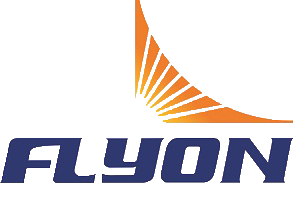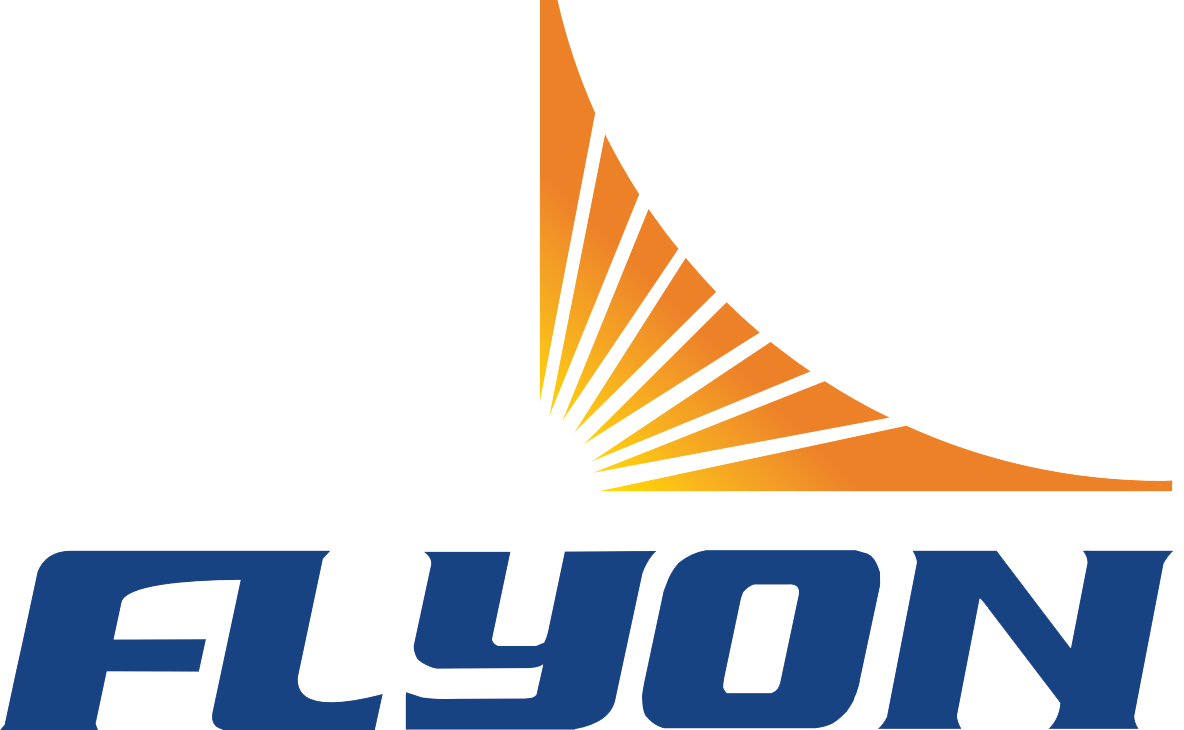လူ့အတွေ့အကြုံကို အခြေခံသော အားကစားကွင်းထိုင်ခုံဒီဇိုင်းဖြင့် ပရိသတ်အတွေ့အကြုံကို မြှင့်တင်ခြင်း
အားကစားကွင်းထိုင်ခုံများတွင် ခန္တီးဗေဒနှင့် အကောင်းဆုံး မြင်ကွင်းရရှိမှု ထောင့်များ
ခေတ်မီအားကစားကွင်းထိုင်ခုံများသည် လူကြီး ၉၅% အတွက် အကောင်းဆုံးအဆင့်ဖြစ်သည့် ၁၇° ထိုင်ခုံစီးနင်းမှုနှင့် ၃၀ လက်မ တန်းအနက်ကို ရယူရန် ဇီဝဆိုင်ရာ အချက်အလက်များကို အသုံးချပါသည် (Sports Engineering Journal 2022)။ ဤသိပ္ပံနည်းကျဒီဇိုင်းသည် ရိုးရှင်းသော ပလက်ဖောင်းပုံစံထက် တင်ပါးပိုင်း ဖိအားကို ၄၀% လျှော့ချပေးပြီး ရှေ့တွင်ထိုင်နေသော ပရိသတ်များ၏ ဦးခေါင်းများကို ကျော်၍ ရှင်းလင်းစွာ မြင်ကွင်းရရှိစေပါသည်။
ဒလ်လပ်စ် ကော်ဘွိုးမ်၏ AT&T အားကစားကွင်းတွင် မြင်ကွင်းရရှိမှု အကောင်းဆုံးဖြစ်အောင် ပြုလုပ်ခြင်း
အဆောက်အဦ၏ ၈၀,၀၀၀ နေရာသည် တစ်ခုလုံးကို ပြတ်ပြတ်သားသားမြင်ကွင်းရရှိစေရန် ပါရာမီတာ 3D မော်ဒယ်လ်ကို အသုံးပြုထားပြီး နေရာ၏ ၉၈% သည် ၂၇° ဒေါင်လိုက်မြင်ကွင်းထောင့်ကို ရရှိပြီး အလယ်ပိုင်းကွင်းလယ်တွင် ဖြစ်ပျက်နေသော အခင်းအကျင်းများကို အာရုံစိုက်ရန် အကောင်းဆုံးဖြစ်စေပါသည်။ အောက်ခြေရှိ ရွေ့လျားနိုင်သော အပိုင်းများသည် အဖြစ်အပျက်အမျိုးအစားပေါ် မူတည်၍ အနီးအဝေးကို အလိုအလျောက် ချိန်ညှိပေးပြီး ဂီတဖျော်ဖြေပွဲများတွင် ပိုမိုနီးကပ်သော ခံစားမှုကို မြှင့်တင်ပေးပြီး ပွဲစဉ်များကျင်းပစဉ်တွင် ကွင်းလယ်ကို မြင်နိုင်မှုကို ထိန်းသိမ်းပေးပါသည်။
| ဒီဇိုင်း အကြောင်းရင်း | ရိုးရာ အားကစားကွင်း | အဆင့်မြင့် ခေတ်မီ အားကစားကွင်း |
|---|---|---|
| စတုရန်းပေ ၁၀၀ လျှင် ထိုင်ခုံအရေအတွက် | 8 | 6.5 |
| ပျမ်းမျှ ခြေထောက်အနားယူနိုင်မှု | 28" | 34" |
| မြင်ကွင်းအာမခံချက် | 75% | 98% |
အဆင့်မြင့် ထိုင်ခုံဇုန်များတွင် စုစုပေါင်းနေရာနှင့် သက်တောင့်သက်သာ ညှိနှိုင်းခြင်း
ကလပ်အပိုင်းများတွင် ယခုအခါ ပရိသတ်တစ်ဦးလျှင် စတုရန်းပေ ၂၂ ကို သတ်မှတ်ပေးထားပြီး ယေဘုယျဝင်ရောက်ခွင့်ရှိသော ဧရိယာများထက် ၃၆% ပိုမိုကျယ်ဝန်းပါသည်။ ထို့ပြင် ထိုင်ခုံတစ်ခုလျှင် ဝင်ငွေသည် ၃ ဆ ပိုမိုများပြားပါသည် (Stadium Business Report 2023)။ ဤကဲ့သို့သော ဗျူဟာမြောက် လဲလှယ်မှုသည် ၁၈၀° လှည့်နိုင်သော ကုလားထိုင်များနှင့် ကိုယ်ပိုင်ပစ္စည်းများအတွက် ဓာတ်သတ်မှတ်စက်များကဲ့သို့သော အဆင့်မြင့် အဆင်ပြေမှုများကို ထောက်ပံ့ပေးပြီး အဆောက်အဦ၏ စုစုပေါင်း နေရာအရေအတွက်ကို မထိခိုက်စေဘဲ ထောက်ပံ့ပေးပါသည်။
တော့တင်ဟမ် ဟော့စပါး အားကစားကွင်းတွင် ဇုန်အလိုက် သက်တောင့်သက်သာ မြေပုံဆွဲခြင်း
၆၂၈၅၀ နေရာပါ ပွဲရုံအတွင်းရှိ အပူချိန်အာရုံခံများနှင့် ဖိအားမြေပုံထုတ်ခြင်းသည် အပိုင်းအသေးစားရာသီဥတုကို အလိုအလျောက် ထိန်းညှိပေးပြီး ပွဲစဉ်များအတွင်း ပုံမှန် ၇၂ ဒီဂရီဖာရင်ဟိုက် (±၂) ကို ထိန်းသိမ်းပေးသည်။ ၂၀၂၃ ကြည့်ရှုသူအပြုအမူ လေ့လာမှု ဒီစနစ်က ဒေသတွင်း စိုထိုင်းမှု ထိန်းချုပ်မှုနဲ့ လမ်းကြောင်း လေစီးဆင်းမှုကို ဦးတည်မှုကြောင့် လေပြွန် လှုပ်ရှားမှုကို ၃၀% လျော့စေပါတယ်။
အခန်းများအတွက် ပြောင်းလွယ်ပြင်လွယ် အသုံးပြုနိုင်ရန်အတွက် ဆွဲဆန့်နိုင်သော ထိုင်ခုံစနစ်များ
ဒီရက်ပိုင်းမှာ အားကစားရုံတွေဟာ ထိုင်ခုံ စီစဉ်မှုမှာ ပိုတော်လာပြီး မကြာခဏတော့ ဆွဲဆန့်လို့ရတဲ့နဲ့ မော်ဂျူးပုံစံ ရွေးချယ်မှုတွေ လုပ်နေလို့ ပရိတ်သတ်အရွယ်အစား အမျိုးမျိုးကို ကိုင်တွယ်နိုင်ပြီး ဖြစ်စဉ် အမျိုးမျိုးအတွက်တော့ ပျော့ပြောင်းမှု ရှိတုန်းပါ။ မကြာသေးမီက စျေးကွက် သုတေသနအရ ၂၀၂၅ မတိုင်ခင် အလားအလာတွေကို ကြည့်နေတယ်၊ မြောက်အမေရိကမှာ ဆောက်လုပ်ထားတဲ့ အားကစား အဆောက်အအုံသစ်အားလုံးရဲ့ သုံးပုံနှစ်ပုံလောက်ဟာ ဒီအမျိုးအစား ထိန်းညှိနိုင်တဲ့ ထိုင်ခုံစနစ်တွေ ပါဝင်လာပါပြီ။ အဓိက အကြောင်းရင်းတွေက ဘာလဲ။ မြို့တွေမှာ နေရာမလုံလောက်တော့ဘူး၊ ဒါ့အပြင် ညတစ်ညမှာ ဖျော်ဖြေပွဲရုံတွေ နောက်တစ်ညမှာ ဘက်စကက်ဘောကွင်းတွေအဖြစ် နှစ်ထပ်အလုပ်လုပ်နိုင်တဲ့ နေရာတွေအတွက် တိုးလာနေတဲ့ ဝယ်လိုအားရှိတယ်။ ဒီစနစ်တွေ ဘယ်လောက်မြန်မြန် အလုပ်လုပ်လဲဆိုတာ ကြည့်လိုက်ပါ- တချို့နေရာတွေဟာ ရော့ခ်ပွဲအတွက် ပရိသတ် ၅၀၀၀၀ ကို နေရာချရာကနေ ဘက်စကက်ဘောပွဲအတွက် ထိုင်ခုံ ၂၀၀၀၀ အထိကို ခြောက်နာရီအတွင်းမှာ ပြောင်းနိုင်ပါတယ်။ ဒီလိုမျိုး အရွယ်စုံမှုဆိုတာက နေရာ စီမံခန့်ခွဲသူတွေဟာ တစ်နှစ်လုံး ကျယ်ပြန့်တဲ့ ပွဲတွေကို မှတ်ပုံတင်နိုင်ပြီး ဒါက သဘာဝအတိုင်း သူတို့ရဲ့ အောက်ခြေကို မြှင့်တင်ပေးတာပါ။
ဆုတ်ခွာနိုင်ပြီး ဖယ်ရှားနိုင်သော ထိုင်ခုံများ
ဆွဲဆန့်နိုင်တဲ့ စနစ်တွေဟာ အခြေခံ အင်ဂျင်နီယာ အခြေခံမူ သုံးခုကို အားကိုးပါတယ်။
- မော်ဂျူးလိုက်လမ်းကြောင်းစနစ်များ အလျား (၁၀၀) ပေအထိ ထောက်ပံ့ပေးခြင်း
- အလျင်လျော့အလူမီနီယံ ဘောင်များ တည်ငြိမ်တဲ့ထိုင်ခုံတွေနဲ့စာရင် တည်ဆောက်မှု ဝန်ထုပ်ကို ၄၀% လျှော့ချပေးခြင်း
- အလိုအလျောက် ပိတ်ထားသော ယန္တရားများ ¢90 မိနစ်အတွင်း ပြန်လည်ပြင်ဆင်နိုင်ခြင်း
| အင်္ဂါရပ် | ရိုးရာနှင့်အညီ ထိုင်ခုံများ | ရွှေ့ပြောင်းနိုင်သော စနစ်များ |
|---|---|---|
| ပြန်လည်ပြုပြင်မွမ်းမံရန် အချိန် | ၈ နာရီ ၁၂ နာရီ | ၁.၅၃ နာရီ |
| နှစ်စဉ်ပွဲတော် အရည်အသွေး | အဖြစ်အဝင် ၁၂၀ ခု | အဖြစ်အဝင် ၁၈၀ ကျော် |
| ပြုပြင်ထိန်းသိမ်းမှု ကုန်ကျစရိတ် | စတုရန်းပေလျှင် ၁၈.၅၀ ဒေါ်လာ | စတုရန်းပေလျှင် ၉.၂၀ ဒေါ်လာ |
မာစီဒီးစ်-ဘင့်ဇ် အားကစားကွင်း၏ ပြောင်းလဲနိုင်သော အောက်ခံဗိုလ်
NFL အဆင့်မီ အားကစားကွင်းတစ်ခုသည် ၇,၀၀၀ ထိုင်ခုံပါ ပြန်တမ်းဆွဲနိုင်သော အောက်ခံဗိုလ်ကို အသုံးပြုခြင်းဖြင့် မော်ဒျူလာ ထိုင်ခုံ၏ ငွေကြေးဆိုင်ရာ သက်ရောက်မှုကို ပြသခဲ့သည်။ ဤတီထွင်မှုသည် နှစ်စဉ် အားကစားမဟုတ်သော အဖြစ်အဝင်များကို ၃၄% ပိုမိုလက်ခံနိုင်စေပြီး ပထမနှစ်တွင် အပိုဆုံး ကုန်စားသောက်ခ ၂.၁ သန်း ရရှိစေခဲ့သည်။ ဟိုက်ဒရောလစ်စနစ်ဖြင့် အလုပ်လုပ်သော စနစ်သည် ၁၂ မိနစ်အတွင်း အတန်း ၁၅ တန်းကို ပြန်တမ်းဆွဲနိုင်ပြီး ၄၂,၀၀၀ စတုရန်းပေ ပြောင်းလဲနိုင်သော ကွင်းခင်းဧရိယာကို ဖန်တီးပေးသည်။
အားကစားကွင်း ထိုင်ခုံနည်းပညာကို အသုံးပြုသော ဟိုက်ဗရစ် အားကစားကွင်းများ၏ တိုးတက်မှု
၂၀၂၀ ခုနှစ်မှစ၍ အသစ်တည်ဆောက်သော အားကစားကွင်းများ၏ ၇၂% သည် အဆင့်မြင့် ဧရိယာများနှင့် ပြန်တမ်းဆွဲနိုင်သော ယေဘုယျဝင်ရောက်ခွင့် ဧရိယာများကို ပေါင်းစပ်ထားသော ဟိုက်ဗရစ် ထိုင်ခုံဒီဇိုင်းများကို အသုံးပြုလာကြသည်။ ဤနည်းလမ်းသည် နှစ်စဉ် ပျမ်းမျှအသုံးပြုနှုန်းကို ၆၂% မှ ၈၉% အထိ တိုးမြှင့်ပေးပြီး HVAC ဇုန်များကို အကောင်းဆုံးအသုံးပြုခြင်းဖြင့် စွမ်းအင်ကုန်ကျစရိတ်ကို ၁၈% လျှော့ချပေးသည် ( ၂၀၂၄ ကမ္ဘာလုံးဆိုင်ရာ အားကစားကွင်း အစီရင်ခံစာ ).
ပြောင်းလဲနေသော ထိုင်ခုံစနစ်များ၏ ထိန်းသိမ်းမှုနှင့် လည်ပတ်မှု ထိရောက်မှု
အလိုအလျောက်ရောဂါရှာဖွေစနစ်များသည် ပြန်လည်ထုတ်လုပ်နိုင်သော ထိုင်ခုံများတွင် ကြိုတင်ထိန်းသိမ်းမှု အယ်လ်ဂိုရီသမ်များကို အသုံးပြု၍ စက်ပိုင်းဆိုင်ရာ ပျက်စီးမှု၏ ၉၂% ကို ကာကွယ်တားဆီးပေးပါသည်။ IoT စနစ်များဖြင့် ပြုလုပ်ထားသော ပလက်ဖောင်းများကို တပ်ဆင်ပြီးနောက် ပြင်ပဖြစ်ရပ်များတွင် အစိတ်အပိုင်းများ၏ သုံ့ယွင်းမှုကို အချိန်နှင့်တစ်ပြေးညီ စောင့်ကြည့်ခြင်းဖြင့် အလုပ်သမားစရိတ်ကို ၃၇% လျှော့ချနိုင်ပြီး ပြင်ဆင်မှုအများစုကို ဖြစ်ရပ်မဟုတ်သော အချိန်များတွင် ပြီးမြောက်အောင် ဆောင်ရွက်နိုင်ပါသည်။
ဝင်ငွေရရှိမှုကို ဦးဆောင်သော အဆင့်မြင့် VIP ဘောက်စ်များနှင့် အဆင့်မြင့်ထိုင်ခုံများ
လုံခြုံစွာနေထိုင်နိုင်မှုနှင့် ဝန်ဆောင်မှုအသုံးပြုနိုင်မှုကို ပေါင်းစပ်ထားသော ထူးခြားသည့်နေရာများ ဒီဇိုင်းထုတ်ခြင်း
Deloitte (၂၀၂၄) အရ VIP အဆင့်မြင့် ဘောက်စ်များသည် ထိုင်ခုံအား ၁၅% သာ သုံးစွဲထားသော်လည်း နေရာ၏ စုစုပေါင်းဝင်ငွေ၏ ၃၀% ကို ထုတ်လုပ်ပေးပါသည်။ အမြတ်အစွန်းမြင့်မားသော ဤနေရာများတွင် အသံကို ပိတ်ဆို့နိုင်သော ကြားပိုင်းများ၊ ၃၆ လက်မ အကျယ်ရှိသော နောက်သို့ဆန့်နိုင်သည့် ထိုင်ခုံများနှင့် ထူးခြားမှုကို တွေ့ကြုံခံစားနိုင်စေရန် သီးခြားထားသော လမ်းလျှောက်လမ်းများကို ပေါင်းစပ်ထားပါသည်။
ROI ကို ဦးဆောင်သည့် အဓိက ဆန်းသစ်တီထွင်မှုများမှာ အောက်ပါတို့ဖြစ်ပါသည်-
- အထူးဝန်ဆောင်မှု ကုန်းများ အစားအသောက်နှင့် သောက်စရာများကို သော့ချက်ဖြင့် ပို့ဆောင်ပေးနိုင်ခြင်း
- ပြောင်းလဲတပ်ဆင်နိုင်သော ကွဲပြားသည့် နံရံများ ကုမ္ပဏီအုပ်စုများအတွက် ပြောင်းလဲပြင်ဆင်နိုင်သော ပုံစံများကို ခွင့်ပြုပေးခြင်း
- နှစ်ဖက်စလုံးမှ မြင်ကွင်းရှိသော ဒီဇိုင်းများ ကွင်းတွင်းအမြင်အာရုံနှင့်အတူ လောင်ချိုးဘက်သို့ ရင်းနှီးသော ဧည့်ဆွဲဧရိယာများကိုပါ ပေးစွမ်းမှု
၂၀၂၃ ခုနှစ်တွင် ရှီကာဂိုမြို့ရှိ အားကစားကွင်းကြီးတစ်ခု၏ ပြုပြင်မွမ်းမံမှုသည် VIP ဧည့်သည်အမှုထမ်းနိုင်စွမ်းကို ၄၀% တိုးချဲ့နိုင်ခဲ့ပြီး ၁၂ လအတွက် လိုင်စင်ငှားရမ်းမှုဖြင့် ၉၈% အသုံးပြုနှုန်းကို ထိန်းသိမ်းထားနိုင်ခဲ့သည်။ စီမံကိန်း၏ ဝင်ငွေသက်ရောက်မှုလေ့လာမှုအရ စံထိုင်ခုံများထက် ၇၄% ဈေးကွက်တိုးမြင့်မှုဖြင့် လက်ဆောင်သီးခြားထိုင်ခုံများကို ရရှိခဲ့ပြီး ပရိသတ်များသည် အစားအသောက်နှင့် အခြားဝန်ဆောင်မှုများအတွက် ၂၂% ပိုမိုသုံးစွဲခဲ့ကြသည်။
ယူနိုက်တက်စင်တာ၏ VIP လောင်းချိုးများ ပြုပြင်ခြင်းနှင့် တိုးချဲ့ခြင်း
ယူနိုက်တက်စင်တာ၏ မကှာသေးမီက ပြန်လည်တည်ဆောက်မှုသည် ဧည့်ဝန်ဆောင်မှု အဆင့်မြှင့် လောင်းဂ်များကို ချဲ့ထွင်ရန်၊ ကိုယ်ပိုင်ဘားများ၊ ရာသီဥတုထိန်းသိမ်းထားသော တံတားများနှင့် ဧည့်သည်များ၏ အတွေ့အကြုံကို မြှင့်တင်ပေးနိုင်မည့် တိုက်ရိုက်တွန်းနယ်ဝင်ရောက်မှုများကို ပေါင်းစပ်ဖြည့်စွက်ခြင်းကို ဦးစားပေးခဲ့သည်။ အသုံးမဝင်သော အထက်အဆင့်နေရာများကို ပြောင်းလဲနိုင်သော ဧည့်ဝန်ဆောင်ခန်းများအဖြစ် ပြန်လည်စီမံခန့်ခွဲခြင်းဖြင့် ဗီအိုင်ပီ အတွက် နေရာအရေအတွက်ကို ၂၈ ရာခိုင်နှုန်း တိုးမြှင့်နိုင်ခဲ့ပြီး ၂၀၂၄ ရာသီအတွက် စွပ်စုံနေရာများ ပြန်လည်စာချုပ်မှုကို ၁၉ ရာခိုင်နှုန်း တိုးတက်စေခဲ့သည်။
အဆင့်မြင့်ထိုင်ခုံများတွင် ပုဂ္ဂိုလ်ရေးအလိုက် အသွင်ပြောင်းခြင်းနှင့် အမှတ်တံဆိပ် ပေါင်းစပ်ခြင်း
အဆင့်မြင့် နေရာများတွင် အခုအခါ လုပ်ငန်းများအား ဂုဏ်ထူးဆောင် ဧည့်ဝန်ဆောင်မှုများကို ပူးတွဲဒီဇိုင်းဆွဲရန် အခွင့်အလမ်းများ ပေးလျက်ရှိပြီး စီးပွားရေးလုပ်ငန်း၏ လိုဂိုများကို စိတ်ကြိုက်ဖုံးအထည်၊ ဒစ်ဂျစ်တယ် ပြသမှုပြားများနှင့် ပင် ပတ်ဝန်းကျင် မီးအား စနစ်များတွင် ထည့်သွင်းပေးလျက်ရှိသည်။ SoFi အားကစားကွင်းတွင် စပွန်ဆာများသည် ဧည့်ခန်းများရှိ မျက်နှာပြင်များတွင် ပြသရန် ထူးခြားသော အကြောင်းအရာများကို စီစဉ်ပေးပြီး အရေးပါသော ပရိသတ်နှင့် ထိတွေ့မှုများကို နက်ရှိုင်းစေကာ လုပ်ငန်း၏ ရှိမှုကို ပိုမိုခိုင်မာစေသည်။
ဂုဏ်ထူးဆောင် ဘောက်စ်နေရာများအတွက် ဈေးနှုန်းသတ်မှတ်မှု မော်ဒယ်များနှင့် ရေရှည်ငှားရမ်းမှုများ
ယနေ့ခေတ်တွင် ဂုဏ်ထူးဆောင် ဘောက်စ်နေရာများ၏ ပိုင်ရှင်အများစုသည် ရေရှည်ငှားရမ်းမှုများကို ရွေးချယ်လေ့ရှိပါသည်။ အဆင့်မြင့် ဖောက်သည်များ၏ လေးပုံသုံးပုံခန့်သည် ဈေးနှုန်းများကို သတ်မှတ်ပေးပြီး ပွဲများအတွက် ဦးစားပေးခွင့်ရရှိစေမည့် နှစ်များစွာသော သဘောတူညီချက်များကို လက်မှတ်ရေးထိုးလေ့ရှိကြသည်။ သို့သော် နေရာများသည် ဈေးနှုန်းသတ်မှတ်မှုကို ဉာဏ်ရည်မြင့်မားစွာ လုပ်ဆောင်လာကြပါသည်။ ၎င်းတို့သည် အသင်း၏ စွမ်းဆောင်ရည်၊ ယှဉ်ပြိုင်သည့်အသင်းနှင့် ထိုနေရာများ တည်ရှိရာ အတိအကျသော နေရာတို့ပေါ် အခြေခံ၍ ပေးသွင်းသူများအား ပေးရမည့်ပမာဏကို ချိန်ညှိပေးပါသည်။ ဤသို့ပြုလုပ်ခြင်းဖြင့် ပုံမှန်ဖောက်သည်များ ထွက်ပြေးမှုကို ကာကွယ်ရင်း ဝင်ငွေကို အများဆုံးရရှိစေပါသည်။ အထူးသဖြင့် ဈေးကွက်သည် ကြာရှည်စွာ တည်ရှိခဲ့ပြီးဖြစ်သော နေရာများတွင် ဖြစ်ပါသည်။
ပရိသတ်များနှင့် ထိတွေ့မှုကို မြှင့်တင်ရန် အားကစားကွင်း ထိုင်ခုံများတွင် နည်းပညာ ပေါင်းစပ်ခြင်း
အာရှန်းယူနစ်များတွင် AR/VR၊ မျက်နှာပြင်များနှင့် မိုဘိုင်းဖြင့် အော်ဒါပေးခြင်းများ ထည့်သွင်းခြင်း
ယနေ့ခေတ် အားကစားကွင်းလုံးဝန်းကျင်များတွင် နည်းပညာဆိုင်ရာ အရာများစွာ ပါဝင်လာပါသည်။ အချို့တွင် ပွဲကစားနေစဉ် ကစားသမားများ၏ စွမ်းဆောင်ရည်များကို ကွင်းတွင်းတွင် တိုက်ရိုက်မြင်တွေ့နိုင်သည့် AR လုပ်ဆောင်ချက်များ ပါဝင်ပြီး ထိုနေရာမှ ဖုန်းဖြင့် ချက်ချင်းပြန်ဖြစ်သည့် အခြေအနေများကို စစ်ဆေးနိုင်ပါသည်။ အကောင်းဆုံးအချက်မှာ ထိုးထားသော နောက်ဘက်ထိုင်ခုံများတွင် QR code များပါဝင်ပြီး အက်ပ်များမှတဆင့် အစားအသောက်များကို တိုက်ရိုက်အော်ဒါပေးနိုင်ပါသည်။ အစားအသောက်ရောင်းချသည့် စင်များတွင် အချိန်ကြာမြင့်စွာ စောင့်ရန် မလိုတော့ပါ။ မကြာသေးမီက ထုတ်ဝေခဲ့သော သုတေသနအရ ဤစနစ်သည် စောင့်ဆိုင်းမှုအချိန်ကို အနီးစပ်ဆုံး ၄၀% ခန့် လျှော့ချပေးနိုင်ပါသည်။ ဂိမ်း၏ တစ်ခုမှမှ လွဲချော်ခြင်းမရှိဘဲ ဟော့ဒေါ့ဂ်တစ်လုံးကို ရယူလိုက်ပုံကို စိတ်ကူးကြည့်ပါ!
SoFi Stadium ၏ အက်ပ်မှထိန်းချုပ်နိုင်သော ထိုင်ခုံလုပ်ဆောင်ချက်များနှင့် ထိုင်ခုံတွင်း ဝန်ဆောင်မှု
ဆိုဖီ အားကစားကွင်းသည် ၎င်း၏ အဆောက်အအုံများအတွက် အောက်ပါအတိုင်း ဝန်ဆောင်မှုများကို ထည့်သွင်းထားပြီး ခန်းမတွင် ထိုင်နေသည့် ပရိသတ်များအတွက် အလွန်စိတ်ဝင်စားဖွယ် အရာများကို ပေးစွမ်းနိုင်ခဲ့ပါသည်။ သူတို့၏ အထူး အပလီကေးရှင်းကို အသုံးပြု၍ ထိုင်ခုံ၏ အကျယ်၊ နောက်သို့ ဘယ်လောက် အနက်ထိ ခေါင်းဆတ်ထားသည်ကို ပြောင်းလဲနိုင်မှုနှင့် တီအိုင်အေ (lower back) အတွက် ပိုမိုကောင်းမွန်သော အထောက်အပံ့ကို ရယူနိုင်ပါသည်။ ထို့အပြင် အားကစားကွင်းတစ်ဝှမ်း တပ်ဆင်ထားသည့် သေးငယ်သော ဘီကွန် (beacon) ကိရိယာများကြောင့် ဂိမ်းကစားနေစဉ် အစားအစာများ အော်ဒါပေးရာတွင် ပိုမိုလွယ်ကူစေပါသည်။ မိမိတို့ အားကစားကွင်းတွင် မှတ်တမ်းတင်ခဲ့သည့် အချက်အလက်များအရ ယခုနှစ်က အစားအစာ ပို့ဆောင်မှုအတွက် စောင့်ဆိုင်းရမှု အချိန်များကို ပျမ်းမျှအားဖြင့် စက္ကန့် ၉၀ သာ ကျန်ရှိခဲ့ပါသည်။ အလွန်ထူးခြားသော အရာတစ်ခုဖြစ်ပြီး ပရိသတ်များသည် အစားအစာနှင့် သောက်စရာများကို ဝယ်ယူရာတွင် ယခင်ကထက် ပိုမိုမြန်ဆန်ပြီး အဆင်ပြေသောကြောင့် စုစုပေါင်း ၂၂% ပိုမိုသုံးစွဲခဲ့ကြပါသည်။
ပေါင်းစပ်ထားသော ထိုင်ခုံနည်းပညာမှတစ်ဆင့် ထိတွေ့မှုမရှိသော ဝန်ဆောင်မှုများနှင့် အချိန်နှင့်တစ်ပြေးညီ ဒေတာ
RFID ကိုအသုံးပြုထားသော ခွက်ထားရန်နေရာများနှင့် Bluetooth ဖြင့်ချိတ်ဆက်ထားသည့် လက်တွန်းများသည် ထိတွေ့မှုမရှိဘဲ ဝယ်ယူမှုများနှင့် လူစုလူဝေးဆိုင်ရာ စာရင်းအင်းများကို အချိန်နှင့်တစ်ပြေးညီ ရယူနိုင်စေပါသည်။ အဆင့်မြင့် ထိုင်ခုံများတွင် တပ်ဆင်ထားသော စင်ဆာများက ထိုင်ခုံအသုံးပြုမှုပုံစံများကို ခြေရာခံပြီး နေရာများအနေဖြင့် သန့်ရှင်းရေး အချိန်ဇယားနှင့် ဝန်ထမ်းစီမံခန့်ခွဲမှုကို ပိုမိုကောင်းမွန်စေရန် အထောက်အကူပြုပါသည်။ စနစ်တစ်ခုတည်းဖြစ်သော စနစ်များက ပွဲကစားနေစဉ်အတွင်း ပရိသတ်များ၏ ကိရိယာများသို့ ကားပါကင်နေရာ အပ်ဒိတ်များ သို့မဟုတ် ကုန်ပစ္စည်းများအတွက် လျှော့စျေးများကဲ့သို့ ပရိသတ်တစ်ဦးချင်းအတွက် သတ်မှတ်ထားသော အကြောင်းအရာများကို တိုက်ရိုက်ပို့ဆောင်ပေးပါသည်။
နည်းပညာဖြင့် မြှင့်တင်ထားသော ထိုင်ခုံများ တပ်ဆင်မှု၏ ROI ဆန်းစစ်ချက်
နည်းပညာပေါင်းစပ်ထားသော ထိုင်ခုံများသည် စတင်ရင်းနှီးငွေ ၁၅ မှ ၂၀% ပိုမိုကုန်ကျသော်လည်း ဈေးနှုန်းမြှင့်တင်မှုနှင့် နေထိုင်မှုကာလကို ရှည်လျားစေခြင်းတို့ဖြင့် တိုင်းတာနိုင်သော အမြတ်အစွန်းများကို ရရှိစေပါသည်။ ၂၀၂၃ ခုနှစ်က လေ့လာမှုတစ်ခုအရ နေရာများသည် တစ်နှစ်တွင် ၃ မှ ၅ ပွဲအတွင်း လက်မှတ်များကို ဈေးမြှင့်ရောင်းချမှုနှင့် app အခြေပြု ကြော်ငြာဝင်ငွေများမှတစ်ဆင့် တပ်ဆင်မှုကုန်ကျစရိတ်ကို ပြန်လည်ရရှိပြီး စံထားခုံများထက် နည်းပညာပါသော ထိုင်ခုံများက သက်တမ်းတစ်လျှော်လုံး တန်ဖိုး ၃ ဆပိုမိုရရှိကြောင်း တွေ့ရှိခဲ့ပါသည်။
အားကစားကွင်း ထိုင်ခုံများ ပြုပြင်မွမ်းမံခြင်းနှင့် အားကစားအဖွဲ့အစည်းများအပေါ် စီးပွားရေး သက်ရောက်မှု
ပရိသတ်များ၏ ကျေနပ်မှုနှင့် ဝင်ငွေအပေါ် ထိုင်ခုံစီစဉ်မှု၏ သက်ရောက်မှု
စတိဒီယမ်များသည် နေရာထိုင်ခင်းများကို မှန်ကန်စွာ ပြုလုပ်ပါက ပရိသတ်များသည် ပို၍ကြာရှိုင်းစွာ နေထိုင်လေ့ရှိပြီး ပွဲစဉ်များတွင် ပိုမိုသော ငွေကို သုံးစွဲကြသည်။ Preferred Seating (2024) ၏ မကြာသေးမီက လေ့လာမှုအရ ပြင်ပြင်ဆင်ထားသော နေရာများတွင် ပရိသတ်များ၏ စံနှုန်းအဆင့်အတန်း 30 ရာခိုင်နှုန်းခန့် တိုးတက်လာခဲ့ပြီး နှစ်စဉ် အဆင့်မြင့်နေရာများတွင် ရောင်းအား 18% တိုးတက်လာခဲ့သည်။ ယခုအခါ မွမ်းမံရန် ရှာဖွေနေသော အသင်းအများစုသည် အခြေခံအားဖြင့် ပထမဆုံး ဦးတည်ကြသည်။ သူတို့သည် လူများမြင်ကွင်းမြင်ရန် မဖြစ်နိုင်သော နေရာများကို ပြင်ဆင်ရန်၊ အထူးသဖြင့် ကွင်းအဆင့်နီးချိုးတွင် အတန်းများကြား ပိုမိုကျယ်ဝန်းသော နေရာများကို ပေးရန်နှင့် လူတစ်ဦးခန့် ပေးသော ငွေပမာဏသည် သူတို့၏ နေရာမှ မြင်ကွင်းကို ကိုက်ညီမှုရှိစေရန် သေချာစေလိုကြသည်။ အချို့သော အသင်းများသည် ကြည့်ရှုရာတွင် မြင်ကွင်းကောင်းမွန်မှုအပေါ် အခြေခံ၍ လက်မှတ်ဈေးနှုန်းများကိုပါ ပြင်ဆင်ကြသည်။
Wembley Stadium ၏ အဆင့်လိုက် နေရာခုံများ မွမ်းမံရေး အစီအစဉ်
ဝင်ဘလီးကွင်းသည် နှစ်စဉ် ၂၅,၀၀၀ ခုံများကို အကောက်ဆွဲဒီဇိုင်းခုံများဖြင့် အစားထိုးရန် လေးနှစ်တာ အစီအစဉ်ကို အကောင်အထည်ဖော်ခဲ့သည်။ ဤအဆင့်ဆင့်ချဉ်းကပ်မှုသည် အနှောက်အယှက်ဖြစ်မှုကို အနည်းဆုံးဖြစ်စေပြီး ဝင်ငွေစီးဆင်းမှုကို ဆက်လက်ထိန်းသိမ်းနိုင်ခဲ့သည်။ မွမ်းမံပြီးနောက် ရလဒ်များတွင် သက်တောင့်သက်သာရှိမှု အဆင့်တွင် ၂၂% တိုးတက်မှုနှင့် ဧည့်သည်တစ်ဦးချင်းစီ၏ အစားအသောက်နှင့် အရည်များ ရောင်းအားတွင် ဒေါ်လာ ၉ တိုးတက်မှု ပါဝင်ပြီး ဝင်ငွေစုစုပေါင်း ၁၅% တိုးတက်မှုကို ရရှိခဲ့သည်။
မီးထရိုင်းကွင်း၏ မွမ်းမံပြီးနောက် ဝင်ငွေတိုးတက်မှု
၂၀၂၂ ခုနှစ်တွင် အဆင့်မြင့် ခုံ ၈,၀၀၀ နှင့် ၃၆၀ ဒီဂရီ ကွင်းလယ်လမ်းကြောင်း ဝင်ရောက်ခွင့်ကို တပ်ဆင်ပြီးနောက် MetLife Stadium သည် NFL ရာသီများအတွင်း အဆင့်မြင့်ခန်းမများ၏ ၉၈% အပြည့်အဝ အသုံးပြုမှုကို ရရှိခဲ့သည်။ ဤမွမ်းမံမှုများက ဧည့်ခံဝန်ဆောင်မှု ပါတီများမှ နှစ်စဉ် ဝင်ငွေ ၁၂ သန်း တိုးတက်မှုကို ဖြစ်ပေါ်စေခဲ့ပြီး ယှဥ်ပြိုင်မှုများသော ဈေးကွက်များတွင်ပါ ခုံများကို ခေတ်မီအောင်ပြုလုပ်ခြင်းသည် ကောင်းမွန်သော အကျိုးအမြတ်များကို ပေးစွမ်းနိုင်ကြောင်း သက်သေပြခဲ့သည်။
အဓိကကွင်းများရှိ ခုံများကို ပြန်လည်ပြုပြင်ရန် အစိုးရနှင့် ပုဂ္ဂလိက မိတ်ဖက်ဖွဲ့မှုများမှ ရန်ပုံငွေထောက်ပံ့ခြင်း
ယနေ့ခေတ်တွင် ပိုမိုသောမြို့များသည် ကြီးမားသော အားကစားကွင်းထိုင်ခုံများ မွမ်းမံရန် ပုဂ္ဂလိကငွေကြေးနှင့် ပူးပေါင်းဆောင်ရွက်နေကြသည်။ ဥပမာ Levi's Stadium ကို ယူပါ၊ ၎င်းတွင် အပြည့်အဝပြန်လည်တည်ဆောက်ရန် ဒေါ်လာ ဘီလျှံ ၃ ဘီလျှံခန့် သုံးခဲ့သည်။ ထိုငွေပမာဏ၏ အပိုင်းတစ်ခုမှာ ကော်ပိုရိတ်များနှင့် နှစ် ၂၀ ကြာ သဘောတူညီချက်များမှ ရရှိခဲ့ခြင်းဖြစ်သည်။ ဤကဲ့သို့သော ပူးပေါင်းဆောင်ရွက်မှုမျိုးသည် အခွန်ပေးသူများ၏ ငွေကြေးကို အလွန်အမင်း ဖိစီးမှုမရှိဘဲ နေရာများတွင် ခေတ်မီသော ထိုင်ခုံနည်းပညာများ တပ်ဆင်နိုင်စေသည်။ ဤကဲ့သို့သော မိတ်ဖက်များ၏ လုပ်ဆောင်ပုံများသည် ရင်းနှီးမြှုပ်နှံသူများ ပြန်လည်ရရှိမှုကို ကိန်းဂဏန်းများ မည်မျှကောင်းမွန်စွာ လုပ်ဆောင်မှုနှင့် ဆက်စပ်နေလေ့ရှိသည်။ ပွဲများတွင် ပိုမိုများပြားလာသော လူအရေအတွက် တက်ရောက်မှု သို့မဟုတ် ပွဲများအတွင်း အစားအသောက်နှင့် အရည်များ ပိုမိုရောင်းချနိုင်မှုကဲ့သို့သော အရာများကို စဉ်းစားပါ။
မေးလေ့ရှိသောမေးခွန်းများ
ခေတ်မီသော အားကစားကွင်းထိုင်ခုံများ၏ အဓိက အကျိုးကျေးဇူးများမှာ အဘယ်နည်း။
ခေတ်မီသော အားကစားကွင်းထိုင်ခုံများသည် ပိုမိုကောင်းမွန်သော အင်ဂျင်နီယာဒီဇိုင်းနှင့် ရှင်းလင်းသော မြင်ကွင်း၊ ပြန်တမ်းထုတ်နိုင်သော ရွေးချယ်စရာများဖြင့် နေရာအသုံးချမှု ထိရောက်မှု၊ ပိုမိုသက်တောင့်သက်သာရှိမှုနှင့် ပရိသတ်များနှင့် ပိုမိုချိတ်ဆက်နိုင်သော နည်းပညာများကို ပေးစွမ်းပြီး ပရိသတ်များ၏ ကျေနပ်မှုနှင့် ဝင်ငွေတိုးတက်မှုကို ဖြစ်ပေါ်စေသည်။
ပြန်တမ်းထုတ်နိုင်သောနှင့် မော်ဒျူလာ ထိုင်ခုံစနစ်များ မည်သို့အလုပ်လုပ်ပါသနည်း။
ပြန်လည်ထုတ်ယူနိုင်သော ကွန်ရက်စနစ်များ၊ ပေါ့ပါးသော အလူမီနီယမ် ဘောင်များနှင့် အလိုအလျောက် ချုပ်ခြင်း စနစ်များကို အသုံးပြု၍ အမြန်ပြောင်းလဲနိုင်ပြီး နေရာအမျိုးမျိုးတွင် အသုံးပြုနိုင်သော ထိုင်ခုံစနစ်များကို ဖန်တီးပေးပါသည်။
အားကစားကွင်းများတွင် VIP အဆင့်မြင့် အခန်းများက ဝင်ငွေရရှိမှုအတွက် မည်သည့်အခန်းကဏ္ဍများကို ပါဝင်ဆောင်ရွက်ပါသနည်း။
VIP အဆင့်မြင့် အခန်းများသည် ထိုင်ခုံအရေအတွက် နည်းပါးသော်လည်း အဆင့်မြင့် အတွေ့အကြုံများနှင့် ဝန်ဆောင်မှုများကို ပေးစွမ်းနိုင်သောကြောင့် နေရာများ၏ ဝင်ငွေ၏ အဓိကအပိုင်းကို ဖန်တီးပေးပါသည်။
ပရိသတ်များ၏ ပါဝင်မှုကို မြှင့်တင်ရန် အားကစားကွင်းထိုင်ခုံများတွင် နည်းပညာများကို မည်သို့ပေါင်းစပ်အသုံးပြုပါသနည်း။
AR/VR ပစ္စည်းများ၊ မိုဘိုင်းဖြင့် အော်ဒါများပေးနိုင်သော စနစ်များနှင့် အပလီကေးရှင်းဖြင့် ထိန်းချုပ်နိုင်သော ထိုင်ခုံလုပ်ဆောင်ချက်များကဲ့သို့သော နည်းပညာများကို အသုံးပြု၍ ကစားသမားများ၏ စွမ်းဆောင်ရည်များကို ကြည့်ရှုနိုင်ပြီး အစားအသောက်များ အော်ဒါပေးခြင်း၊ ထိုင်ခုံများကို ချိန်ညှိခြင်းများ ပြုလုပ်နိုင်ကာ ပွဲတော်အတွေ့အကြုံကို ပိုမိုကောင်းမွန်စေပါသည်။
အားကစားကွင်း ထိုင်ခုံများကို ပြုပြင်မွမ်းမံရာတွင် အများပြည်သူနှင့် ပုဂ္ဂလိက မိတ်ဖက်ဖွဲ့ခြင်းများ အဘယ်ကြောင့် အရေးပါပါသနည်း။
အားကစားကွင်း ထိုင်ခုံများကို ကျယ်ပြန့်စွာ ပြုပြင်မွမ်းမံရန် လိုအပ်သော ရန်ပုံငွေများကို ပေးစွမ်းပေးပြီး ကုန်ကျစရိတ်များနှင့် ငွေကြေးဆိုင်ရာ အန္တရာယ်များကို ဖြန့်ဖြူးပေးကာ နည်းပညာအဆင့်မြင့် ထိုင်ခုံများ တပ်ဆင်နိုင်ရန် အခွင့်အလမ်းပေးပါသည်။
အကြောင်းအရာများ
-
လူ့အတွေ့အကြုံကို အခြေခံသော အားကစားကွင်းထိုင်ခုံဒီဇိုင်းဖြင့် ပရိသတ်အတွေ့အကြုံကို မြှင့်တင်ခြင်း
- အားကစားကွင်းထိုင်ခုံများတွင် ခန္တီးဗေဒနှင့် အကောင်းဆုံး မြင်ကွင်းရရှိမှု ထောင့်များ
- ဒလ်လပ်စ် ကော်ဘွိုးမ်၏ AT&T အားကစားကွင်းတွင် မြင်ကွင်းရရှိမှု အကောင်းဆုံးဖြစ်အောင် ပြုလုပ်ခြင်း
- အဆင့်မြင့် ထိုင်ခုံဇုန်များတွင် စုစုပေါင်းနေရာနှင့် သက်တောင့်သက်သာ ညှိနှိုင်းခြင်း
- တော့တင်ဟမ် ဟော့စပါး အားကစားကွင်းတွင် ဇုန်အလိုက် သက်တောင့်သက်သာ မြေပုံဆွဲခြင်း
- အခန်းများအတွက် ပြောင်းလွယ်ပြင်လွယ် အသုံးပြုနိုင်ရန်အတွက် ဆွဲဆန့်နိုင်သော ထိုင်ခုံစနစ်များ
-
ဝင်ငွေရရှိမှုကို ဦးဆောင်သော အဆင့်မြင့် VIP ဘောက်စ်များနှင့် အဆင့်မြင့်ထိုင်ခုံများ
- လုံခြုံစွာနေထိုင်နိုင်မှုနှင့် ဝန်ဆောင်မှုအသုံးပြုနိုင်မှုကို ပေါင်းစပ်ထားသော ထူးခြားသည့်နေရာများ ဒီဇိုင်းထုတ်ခြင်း
- ယူနိုက်တက်စင်တာ၏ VIP လောင်းချိုးများ ပြုပြင်ခြင်းနှင့် တိုးချဲ့ခြင်း
- အဆင့်မြင့်ထိုင်ခုံများတွင် ပုဂ္ဂိုလ်ရေးအလိုက် အသွင်ပြောင်းခြင်းနှင့် အမှတ်တံဆိပ် ပေါင်းစပ်ခြင်း
- ဂုဏ်ထူးဆောင် ဘောက်စ်နေရာများအတွက် ဈေးနှုန်းသတ်မှတ်မှု မော်ဒယ်များနှင့် ရေရှည်ငှားရမ်းမှုများ
-
ပရိသတ်များနှင့် ထိတွေ့မှုကို မြှင့်တင်ရန် အားကစားကွင်း ထိုင်ခုံများတွင် နည်းပညာ ပေါင်းစပ်ခြင်း
- အာရှန်းယူနစ်များတွင် AR/VR၊ မျက်နှာပြင်များနှင့် မိုဘိုင်းဖြင့် အော်ဒါပေးခြင်းများ ထည့်သွင်းခြင်း
- SoFi Stadium ၏ အက်ပ်မှထိန်းချုပ်နိုင်သော ထိုင်ခုံလုပ်ဆောင်ချက်များနှင့် ထိုင်ခုံတွင်း ဝန်ဆောင်မှု
- ပေါင်းစပ်ထားသော ထိုင်ခုံနည်းပညာမှတစ်ဆင့် ထိတွေ့မှုမရှိသော ဝန်ဆောင်မှုများနှင့် အချိန်နှင့်တစ်ပြေးညီ ဒေတာ
- နည်းပညာဖြင့် မြှင့်တင်ထားသော ထိုင်ခုံများ တပ်ဆင်မှု၏ ROI ဆန်းစစ်ချက်
- အားကစားကွင်း ထိုင်ခုံများ ပြုပြင်မွမ်းမံခြင်းနှင့် အားကစားအဖွဲ့အစည်းများအပေါ် စီးပွားရေး သက်ရောက်မှု
-
မေးလေ့ရှိသောမေးခွန်းများ
- ခေတ်မီသော အားကစားကွင်းထိုင်ခုံများ၏ အဓိက အကျိုးကျေးဇူးများမှာ အဘယ်နည်း။
- ပြန်တမ်းထုတ်နိုင်သောနှင့် မော်ဒျူလာ ထိုင်ခုံစနစ်များ မည်သို့အလုပ်လုပ်ပါသနည်း။
- အားကစားကွင်းများတွင် VIP အဆင့်မြင့် အခန်းများက ဝင်ငွေရရှိမှုအတွက် မည်သည့်အခန်းကဏ္ဍများကို ပါဝင်ဆောင်ရွက်ပါသနည်း။
- ပရိသတ်များ၏ ပါဝင်မှုကို မြှင့်တင်ရန် အားကစားကွင်းထိုင်ခုံများတွင် နည်းပညာများကို မည်သို့ပေါင်းစပ်အသုံးပြုပါသနည်း။
- အားကစားကွင်း ထိုင်ခုံများကို ပြုပြင်မွမ်းမံရာတွင် အများပြည်သူနှင့် ပုဂ္ဂလိက မိတ်ဖက်ဖွဲ့ခြင်းများ အဘယ်ကြောင့် အရေးပါပါသနည်း။
 EN
EN
 AR
AR
 FR
FR
 PT
PT
 RU
RU
 ES
ES
 BG
BG
 HR
HR
 CS
CS
 DA
DA
 NL
NL
 FI
FI
 DE
DE
 EL
EL
 HI
HI
 IT
IT
 JA
JA
 KO
KO
 NO
NO
 PL
PL
 RO
RO
 SV
SV
 CA
CA
 TL
TL
 ID
ID
 SR
SR
 SK
SK
 UK
UK
 VI
VI
 HU
HU
 TH
TH
 TR
TR
 MS
MS
 AZ
AZ
 KA
KA
 BN
BN
 LO
LO
 MN
MN
 MY
MY
 UZ
UZ


